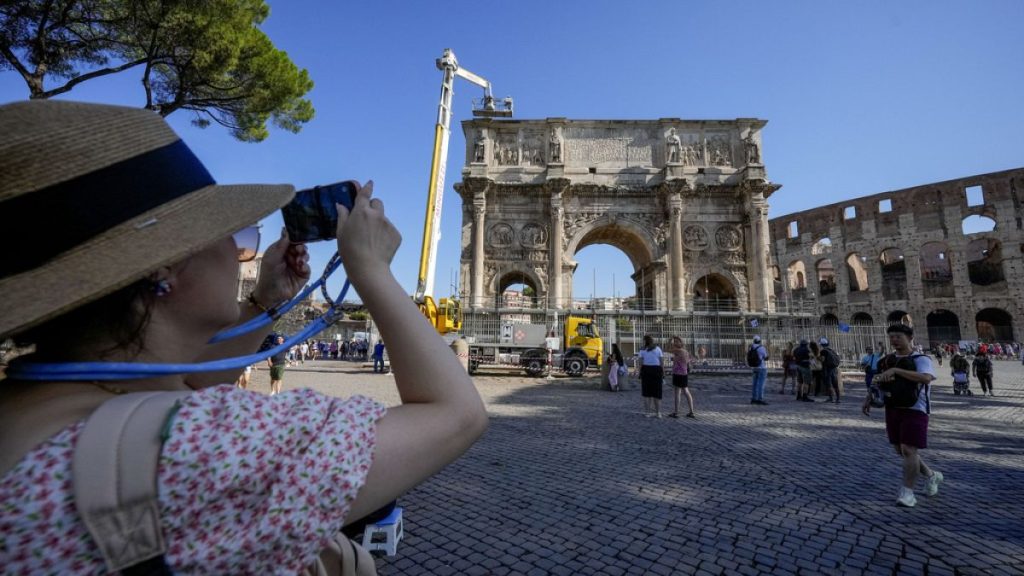Authorities in Italy have begun work to secure Rome’s Constantine Arch after a lightning strike caused fragments to break off from the ancient monument. The incident occurred during a violent thunder and lightning storm that also caused damage to trees and flooding in the Italian capital. Workers from the Colosseum Archeological Park quickly gathered and secured the fragments of white marble that fell from the arch after the storm cleared. Tourists visiting the site also found some stray fragments and turned them over to park workers out of concern for the preservation of the monument.
The recovery work by technicians was swift and efficient, with all of the fragments being recovered and secured soon after the lightning strike. One tourist, Jana Renfro, expressed surprise at finding the pieces and noted the surreal nature of the situation. Renfro, along with other tourists, turned over the fragments they found to park workers, showcasing great sensitivity for Roman antiquities according to their tour guide, Serena Giuliani. Authorities in Rome are currently evaluating the extent of the damage caused by the storm, which was unexpected and not predicted by any weather forecast.
Standing at over 20 meters in height, the Constantine Arch was erected in A.D. 315 to commemorate Emperor Constantine’s victory over Maxentius following the battle at Milvian Bridge. The arch has stood for more than 1,700 years as a symbol of this historic event, making it an important and iconic landmark in Rome. The recent lightning strike and subsequent damage serve as a reminder of the vulnerability of ancient monuments to natural elements and the importance of their preservation for future generations to appreciate.
The Colosseum Archeological Park and local authorities are working diligently to secure the Constantine Arch and ensure its safety and preservation. The fragments of marble that broke off from the arch are being carefully collected and secured to prevent further damage. The quick response by park workers and tourists in turning over the found fragments demonstrates a shared commitment to protecting and preserving Rome’s rich history and cultural heritage.
The unexpected nature of the storm and lightning strike that damaged the Constantine Arch highlights the challenges faced in safeguarding ancient monuments from environmental hazards. While weather forecasts can help predict some natural disasters, sudden and severe storms like the one that struck Rome pose a threat to historic sites. It is essential for authorities and conservationists to remain vigilant and proactive in protecting these cultural treasures from potential damage.
As authorities continue to assess the extent of the damage and work to secure the Constantine Arch, the incident serves as a reminder of the fragility of ancient monuments and the importance of ongoing conservation efforts. The dedication of workers and tourists in responding to the damage and preserving the fragments of the arch demonstrates a collective commitment to safeguarding Rome’s cultural heritage. By taking swift action to secure and protect historic landmarks like the Constantine Arch, future generations can continue to appreciate and learn from these significant symbols of the past.


